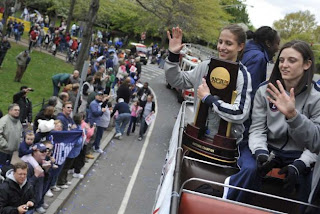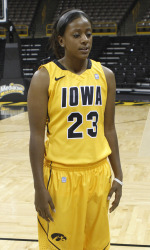DuQuoin.com reports:
What do these women have in common: a 40-year-old runner, a 20-year-old
collegiate volleyball player and a 16-year-old soccer player?
They are all female athletes, and as such, they are predisposed to
certain injury patterns and anatomical weaknesses. Because of these
predispositions, female athletes have different training needs than
their male counterparts.
Research has shown that athletic women’s muscle recruitment patterns
differ from men’s and that they have different muscle imbalances than
men. Both of these factors can lead to an increased risk of injury,
especially to the knee, and specifically to the anterior cruciate
ligament, or ACL, an important stabilizing ligament in the knee.
It has also been found that 20 to 30 percent of women have one leg that
is weaker than the other, which can increase injury risk by 2.6 times
the normal rate. Therefore, specific training strategies need to be
aimed at improving these weak/poorly functioning muscles.
There are four main issues that affect a woman’s athletic performance:
excessive flexibility; decreased hamstring (back of the thigh) strength
and recruitment time; decreased strength of the hip abductors and
external rotators (the muscles that move your leg out the side and
rotate your hip outward); and sub-optimal jump landing position.
Everyone wants to be flexible, but female athletes are often too
flexible. This can reduce stability of the joints around the stretched
muscle. Consider the hamstrings. You may often hear, “My hamstrings are
so tight, I really need to stretch them.” Many people tend to
overestimate the need for increased hamstring length and, therefore,
stretch too much. In fact, excessive flexibility in this area in females
is common. Click
here to continue reading.




























